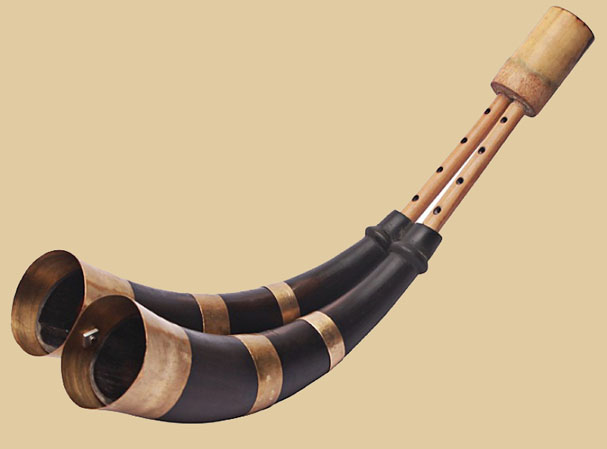Himachal Pradesh is a treasure house of metal idols enshrined in temples, villages, and home altars. Traditionally, good craftsmanship grew around temples and palaces. The metals mainly used in Himachal Pradesh are brass, copper, iron, tin, and bell-metal; the various techniques practised include chasing, repoussè, engraving, casting, beating, hammering, and soldering. Repoussè, known locally as tapai, involves raising designs in relief on a metal sheet. Highly-skilled blacksmiths can be found in Chamba town, Brahmour, and Chatrahi in Chamba district and in Kangra, Kulu, and Kinnaur districts. Metal idols of gods in the classical as well as rural traditions were cast by the lost wax process and both solid and hollow methods of casting were used. Traditionally an alloy of five metals —gold, silver, copper, brass, and lead — was used to cast bronze images, but in contemporary times an alloy of brass, copper, and lead is used. Ritual objects for temples and house altars include octagonal low settees, bells with decorative handles, incense burners, lamps, jars for storing ganga jal, flasks for storing wine, and umbrella-like canopies in silver and brass. The silver filigree work practised in Mandi shows remarkable skill and delicacy. The metalsmiths of Kinnaur make door handles in the form of a crocodile, tiger, or lion head using the repoussè technique.
The Norbulinka Institute, set up in Dharamsala for the preservation of Tibet’s cultural traditions, a centre has been established to provide training in the art of both sheet metal and metal casting; it is the combined use of these techniques that distinguishes Tibetan metal work. A range of statues are made to cater to a variety of requirements-large statues are made for the monasteries while smaller statues are made for sale to individuals. The large statues are made as individual cast parts that are eventually joined by soldering or brazing. The statue is fininshed through the mercury gilding process, usually executed under the supervision of a master craftsman. The occasional addition of inlaid precious stones to the bronze statue is motivated by the belief that the statue’ s spiritual presence is increased by the value of the material used. The training received by the craftsmen includes the development and refinement of drawing skills and a knowledge of the proportion system and measurements laid down in canonical texts.
Gallery
YOUR VIEWS
PRACTITIONERS: INDIA
Access 70,000+ practitioners in 2500+ crafts across India.
BIBLIOGRAPHY
10,000+ listings on arts, crafts, design, heritage, culture etc.
GLOSSARY
Rich and often unfamiliar vocabulary of crafts and textiles.
SHOP at India InCH
Needs to be written.






